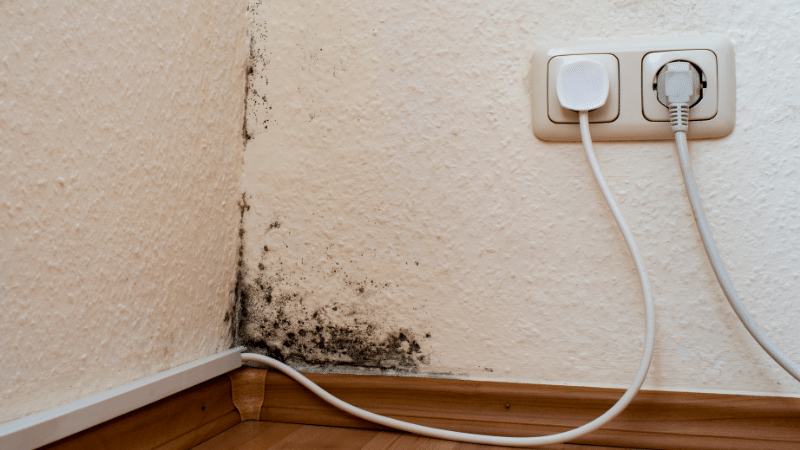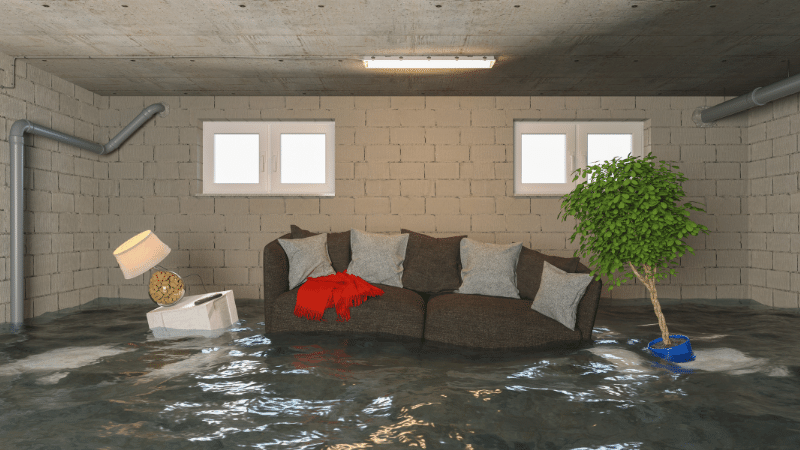Discovering flooding in your basement can be a devastating experience. The clean-up process may take some time, and the flooding may cause permanent damage to your items and even mold growth which can be harmful for your health. If you have flooding in your basement, it is very important to react within 24 to 48 hours so that you can prevent mold.
If mold does form as a result of basement flooding, you need to act fast to have it removed. Whether you can clean up the mold yourself or if you need to call a professional mold removal company will depend on the size of the area that has been affected by mold. If the affected area is 10 square feet or less, you may be able to clean it up yourself with soap and water. If you are dealing with a larger space that has been affected by mold, it is advisable that you call a professional mold removal company so that you can have it properly removed and ensure that it does not come back.
How to Safely Clean Mold from your Home
You should never try to clean mold yourself if you are immunocompromised, have respiratory issues, or any other health problems that could be affected by cleaning up mold. Instead, reach out to mold removal specialists and have them remediate the mold.
If you do not have any health issues that could affect you if you clean up mold, you should follow these steps as outlined by the EPA, Centers for Disease Control and Prevention, and the Occupational Safety and Health Administration to clean the mold.
- Cleaning up mold should be done right away. You should open all windows and doors and use dehumidifiers and fans to help air out the wet areas.
- All porous items that were in contact with water for more than 48 hours should be removed from your home. Some examples of porous items include carpeting, furniture, clothing, paper, wood products, food etc. These items will continue to be a source of mold growth. It is crucially important to remove these materials and clean your home as dead mold can cause allergic reactions.
- All wet items and areas should be cleaned with water and detergent. This will help prevent the growth of mold.
- Any damaged items should be stored outside of your home until the insurance claim is processed.
- Do not pump all the water out immediately as the floor could crack and the walls could collapse from the pressure. You should draw out one foot of water, wait 24 hours, draw out another foot of water, and wait another 24 hours. If the water level remains down after these steps, then you can draw out 2-3 feet of water every 24 hours.
- If the mold at your home is due to floodwater, you will have to use a mixture of 1 cup of bleach and 1 gallon of water to clean it up.

- If the AC or heating unit in your home has been affected by floodwaters, do not use them. This is because there is a chance that bacteria, microorganisms, and mold could have filled them. All areas of the unit should be inspected, cleaned, and disinfected by a professional to ensure the safety of you and your family.
- During the cleanup process, you should wear the proper gear to cover your eyes, nose, and hands as well as a long sleeve shirt and pants with work shoes. The following gear will help protect you from mold spores as you clean up the mold:
- Respirator
You can get an N-95 respirator at a hardware store to help keep mold spores from entering your nose and mouth during the mold clean up process.
Goggles
Wearing goggles will ensure that mold spores do not get into your eyes. The goggles you use should not have ventilation holes.
Gloves
You should always use gloves when handling moldy items. It is best to wear long gloves that go up to the middle of your forearm. If you are only working with detergent and water, you can use regular rubber gloves. However, if you are using bleach or related products you should use gloves made of natural rubber, neoprene, nitrile, polyurethane, or PVC.
- Respirator
Once you’ve removed all the mold from the affected areas, it should no longer be visible or have an odor. However, you will see staining and cosmetic damage. Once the areas have fully dried, then you can paint them.
If your home has a basement that is usually somewhat damp, make sure to use a dehumidifier that has a large tank that can collect 60 to 70 pints of water per day, so you don’t have to empty it all the time.
Have you experienced a flood in your basement, and you need help with cleaning up? ServiceMaster by Replacements can help. We offer a full range of mold removal services to find and remove mold from your home or business. Our technicians will use advanced infrared technology to find the mold, and then fully remove it with our specialized chemicals, equipment, and processes. For all your flood restoration needs call ServiceMaster by Replacements today at (732) 842-6917.







